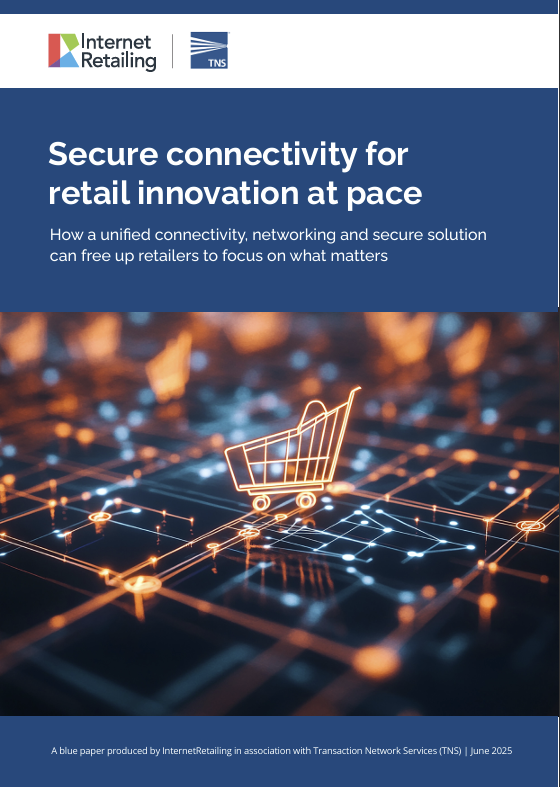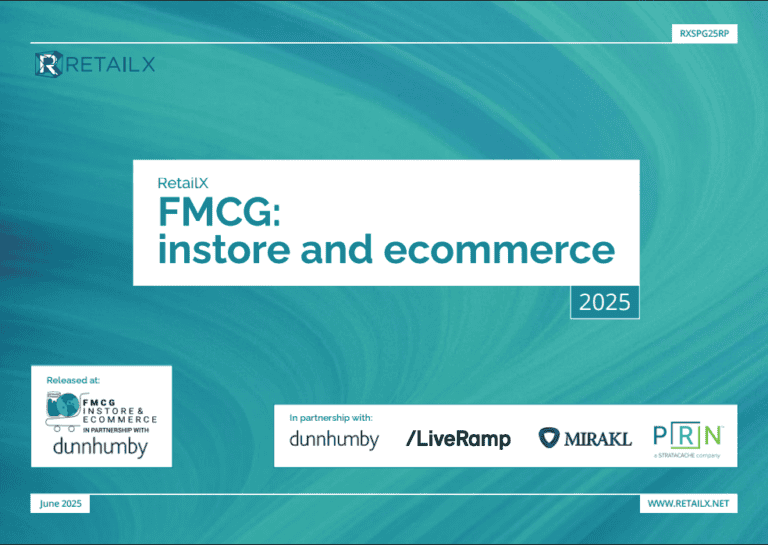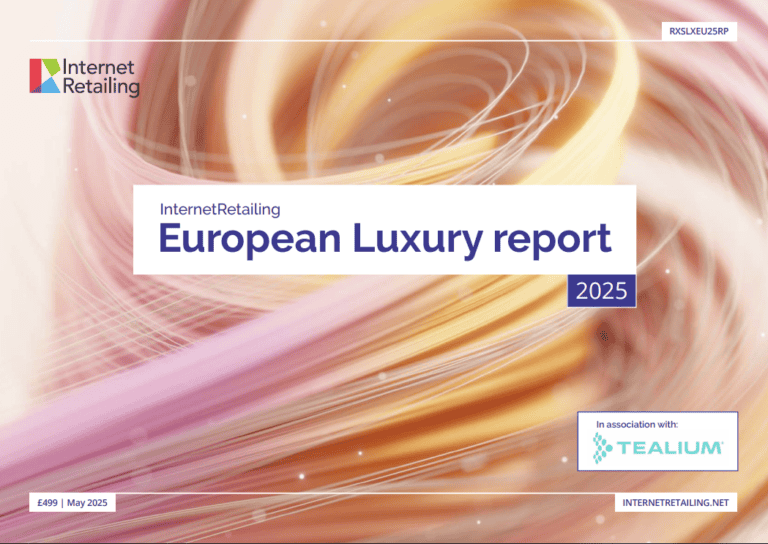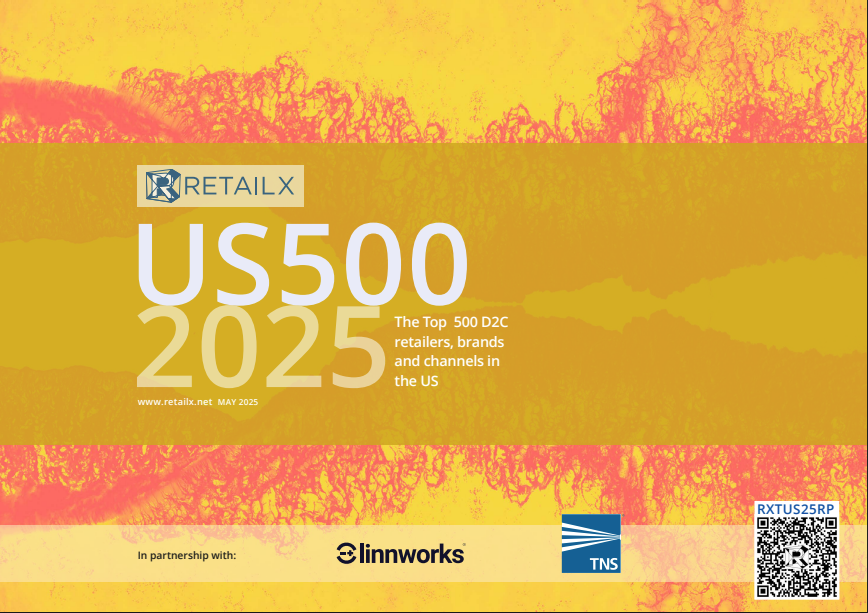Blindly producing content won’t build your subscription business. What matters most is how you use content to create value at every step of the subscriber journey.
Yet, so often, what seems obvious is neglected.
Here direct-to-consumer brands can take a cue from media. While technology gets media companies’ content into consumers’ hands, it is their content that builds loyalty and keeps customers coming back for more.
According to Zuora’s latest Subscription Economy Index (SEI), companies in the index grew revenue 11% faster than the S&P 500 over the past two years. But it’s getting harder. Consumers are more selective than ever about what subscriptions they opt for, and which ones they keep. In this environment, your content strategy can make a crucial difference.
Media: retention through content and engagement architecture
Let’s take a brief look at three media examples.
The New York Times and Amedia
A big part of media’s content strategies are simple on the surface: they show up consistently in consumers’ feeds thanks to fresh, quality content. That regular production cycle is at the heart of it, with the goal of staying in front of users, creating habits and building their subscriptions business. However, it is also about creating content that generates special appeal.
As this Zacks Equity Research article for Nasdaq somewhat obviously asserts, “digital content dominates the modern landscape and traditional media organisations must adapt to stay relevant. The New York Times Company (NYT) has successfully embraced this transformation, making digital subscriptions a key revenue source.
“By prioritising high-quality journalism, tailored content and strategic pricing, NYT has bolstered its subscriber base. The company has also broadened its digital offerings beyond news, incorporating lifestyle, cooking, crosswords and more, each (content segment) playing a role in its subscription expansion.”
Referring to the content bundling strategy of NYT and Amedia (a Norwegian local news publisher), INMA’s Greg Piechota writes that: “All-access bundle subscribers have up to 26-times larger average lifetime value for a news publisher than customers of single products. This is driven by dramatically lower churn rather than a much higher price.
“My comparative analysis of [these] two very different companies reveals a compelling business case for bundling:
- Superior engagement leading to substantial retention gains.
- Huge lifetime value boost despite small ARPU differences.
- Massive total revenue share even from a smaller slice of subscribers.”
The Atlantic
Leading publishers treat engagement as a primary KPI, far more critical than vanity indicators such as page views. The Atlantic is an example.
With a retention rate of more than 70%, The Atlantic tracks something called Reader States. “This proprietary metric,” writes WAN-Ifra, “ tracks how frequently subscribers engage with content. Unlike breaking news outlets, The Atlantic doesn’t expect readers to consume multiple articles at once.
“Instead, it defines success as a subscriber returning on several different days within a 30-day period. Those who read on at least four separate days a month tend to develop a weekly habit – a strong predictor of staying subscribed for a year. The goal is to grow the share of readers in the ‘Engaged’ and ‘Core Reader’ categories.”
The Atlantic’s Reader States:
| Reader State | # days visit/30 days |
| Dormant | 0 days |
| Fly-by | 1 day |
| Casual | 2-3 days |
| Engaged | 4-8 days |
| Core | 9+ days |
| Goal: Increase % of subscribers in engaged and core states | |
Source: WAN-Ifra
Brands: Developing the content strategy
Taking our cue from the media, here are some suggestions you can employ to create year-round, engaging content to drive your DTC brand.
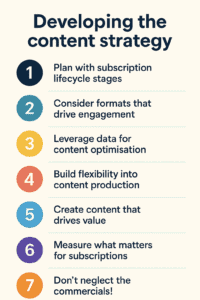
1. Plan with subscription lifecycle stages
Identify and then map content to customer journey phases.
- New subscribers need onboarding content that demonstrates immediate value. For example, a supplement brand might offer a “30-day kickstart plan” or daily habit tracker to help customers feel immediate progress.
- Active users require deeper, specialised material that supports habit and justifies ongoing payments. Think seasonal style guides for apparel brands, recipe series for food subscriptions, or monthly workout plans for fitness brands.
- At-risk subscribers benefit from exclusive previews, behind-the-scenes stories, or success case studies to rebuild emotional connection before they churn.
For example, create content calendars around your acquisition and retention milestones. For example, consider 30, 60, and 90-day marks with content tailored to each stage’s likely questions and motivations.
2. Consider formats that drive engagement
Further consider content formats that will add depth to the content offer, for example:.
- Add interactive and community-driven content. Q&As, polls, live chats, and user-generated content can create two-way conversations and make subscribers feel part of something bigger than a simple purchase.
- Develop signature content series. Regular features — weekly product spotlights, monthly expert sessions, or seasonal style breakdowns — build anticipation and help cement routine engagement.
- Experiment with “member-only” live shopping events, behind-the-scenes product development diaries, or small virtual meetups that showcase top customers and their stories.
3. Leverage data for content optimisation
Track engagement depth over volume. Time spent, repeat visits, and shares tell you far more than surface-level likes or page views. Consider developing unique measures of engagement such as The Atlantic’s Reader States.
Continuously A/B test your content. Experiment with different storytelling approaches, lengths, subject lines, and publishing cadences to see what moves the needle on repeat purchases and retention.
4. Build flexibility into content production
Maintain evergreen content libraries. A good measure is for around 30–40% of annual content to be timeless. This content acts as a “safety net” and includes, for example, “how-to” guides, care tips, or product usage inspiration that remains valuable all year.
At the same time, consider keeping about 15–20% of capacity open for rapid-response content tied to trends, cultural moments, or sudden product launches. Agility helps brands feel fresh and relevant to their audience.
5. Create content that drives value
Lead with audience value, not product features. Show transformations and real-world benefits — before-and-after results, lifestyle improvements, or community achievements — rather than listing ingredients or technical specs as your subscription-driving content.
Design for shareability. Subscriber testimonials, user-generated product hacks, and “unboxing” moments naturally spread, validate brands, and extend reach.
6. Measure what matters for subscriptions
Focus on retention and loyalty metrics. Track content impact on churn, engagement scores, and lifetime value rather than simply monitoring open rates or website traffic.
Map which content pieces influence sign-ups, renewals, and upsells. Use these insights to inform future investment and fine-tune what resonates most.
7. Don’t neglect the commercials!
Strong content strategies don’t just improve retention and lifetime value. They translate into higher recurring revenue and create clear opportunities for upselling premium products or services. The right content is a revenue growth driver, not just a support tool.
What About AI?
Finally, we can’t ignore AI in the content generation process. When used well, it can transform content strategies and drive revenue gains. But it is not without risk.
On the content distribution (AI-driven personalisation and recommendation) side, using AI is a no-brainer. For example, Spotify’s personalised listening experiences is one of the reasons behind its subscription success. Imagine if the consumer had to do all that work to surface the songs they like from Spotify’s vast catalogue of music.
On the content production side, AI speeds things up in ways we wouldn’t have imagined only a few years ago. You generate stories in seconds, develop well-researched long-form pieces in under an hour, and fine-tune all your content to ensure it’s clear, on-brand, and audience-ready.
But there are risks. Quality is one. Brand safety concerns are real. Consumers worry about misinformation. There is “disconnectedness” when they suspect content is only AI-generated. “Authenticity” has become a driver of success.
A balanced approach is best. AI shines at tasks that rely on data and scale, but the human touch matters in storytelling, crisis messaging, and cultural nuance — areas that build deep emotional connections and subscriber loyalty over time.
Power to the People
The best content-led strategies work because they put the subscriber at the centre.
By focusing on consistent, high-quality output tailored to different stages of interest and of the subscriber journey, they drive sign-ups, but habits and develop long-term loyalty.
Media brands like The New York Times, Amedia and The Atlantic show that content bundles and regular engagement is the true North Star, not empty reach metrics.
Content should be about filling inboxes or social media feeds.
It should be about building an emotional connection, attracting new subscribers and, critically, showing existing ones new ways to enjoy what they already have.
It builds on a strategy that turns each piece of content into a touchpoint that influences the decision to subscribe or reinforces the decision to stay subscribed.
Ultimately, strong content strategies combine tech-driven efficiency with editorial focus and depth. Brands that master this mix will see their customers come back for more, again and again.

Heyl is a Content Partner at Atlas and Founder of That Coalition, a fractional event services and content provider.
Heyl has worked with third-party clients such as Chartbeat, Lineup Systems, and Tubular Labs in Europe and the US, Prospect in the UK, and industry bodies such as PRCA (Communications and Public Affairs) in the UK, MVFP (German Publishers Association) and the Association of Indian Media (AIM).






